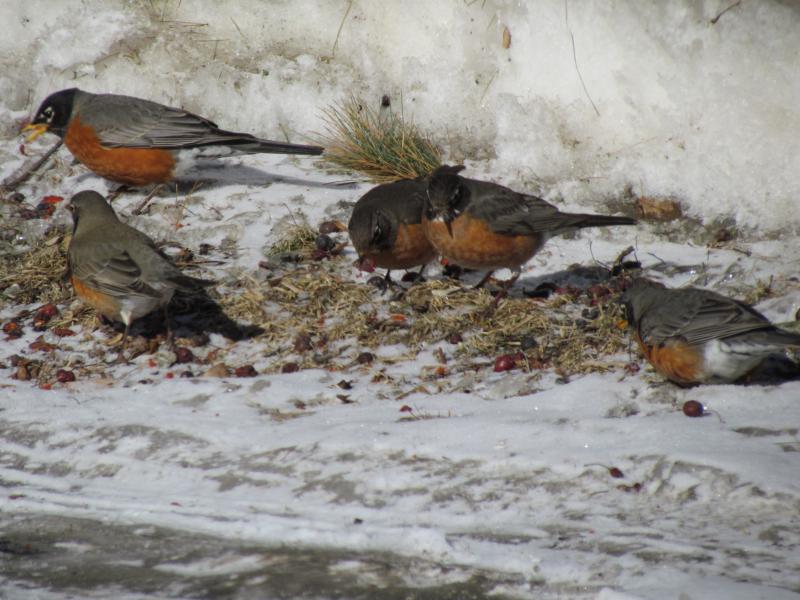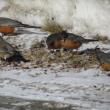A neighborly chat about migration
We were talking with one of our next-door neighbors recently, on one of the recent nine degree “spring” mornings, when he expressed his surprise that some of the birds had migrated back north to Maine, given the lingering cold weather.
Like many people in Maine, at least in the southern half of the state, he had noticed the flocks of American robins and cedar waxwings that seemed to appear over the last month or so. With these two species in particular, it is always a little difficult to ascribe their appearance necessarily as the first returning migrants of spring.
Sure, most of us were raised with the idea that one of the first signs of spring is the return of robins. But robins, at least in recent decades, are fairly regular winterers in small numbers in much of southern and coastal Maine. Remember that robins have an incredibly large breeding range that extends across not only most of the U.S. but most of Canada as well, even inhabiting Arctic tundra in summer. Those far northern birds may be some of the individuals that spend the winter here in Maine, although we don’t really know that.
In fact, in some instances, it is the birds at the northern extreme of the breeding range that travel the farthest south to winter! But even if some robins winter here in Maine, it seems clear that this year, as in many years, there was a pretty major influx of them into Maine in late winter/early spring that could likely be birds returning in northward spring migration, perhaps on their way to Canada or Alaska.
Our neighbor’s comment brings up another interesting aspect of bird migration that researchers have spent decades trying to understand. That is, what determines when birds begin their northward spring migration from the wintering grounds?
From a bird’s perspective, the timing of return to the breeding grounds is a complex race. On the one hand the bird wants to get to the best locations before a competitor arrives to stake a claim on a coveted territory. On the other hand, the bird doesn’t want to arrive so early that is must deal with cold and bad weather and a lack of food and water.
On an evolutionary time scale, it must time its arrival such that when its young hatch, there is abundant insect life to give their offspring the necessary protein to build bones and muscle and leave the nest early enough to be ready for coping with the rigors of fall migration.
Birds are thought to time their departures in spring migration based largely on physiological changes induced by advancing day length in the spring. But there are some interesting caveats. Bird species that winter farther north (those that are often categorized as short-distance migrants) are apparently able to modify the exact timing and especially the speed of their northward migration based on the local weather conditions they encounter along the way. A tree swallow moving north from Florida in March may decide to stay down in North Carolina for a few days or a few weeks rather than continuing on if it runs into cold weather.
Birds that winter in the tropics, so-called long-distance migrants, are apparently less able to modify their departures and speed of return, probably because there are fewer clues in the tropics to what is going on to the North, where they are headed. Interestingly, short-distance migrants now arrive on average about two weeks earlier than they did in your grandparents’ time, an apparent response to climate change.
Long-distance migrants on average, though, are arriving only a few days earlier than they used to. (More about the implications of this in an upcoming column.) It is unclear whether or not something similar could be happening with some of our long-distance migrants. Cold weather or not, the birds will be returning to our area with new arrivals every week. Keep your eyes and ears tuned to what is back in your yard!
Event Date
Address
United States

























